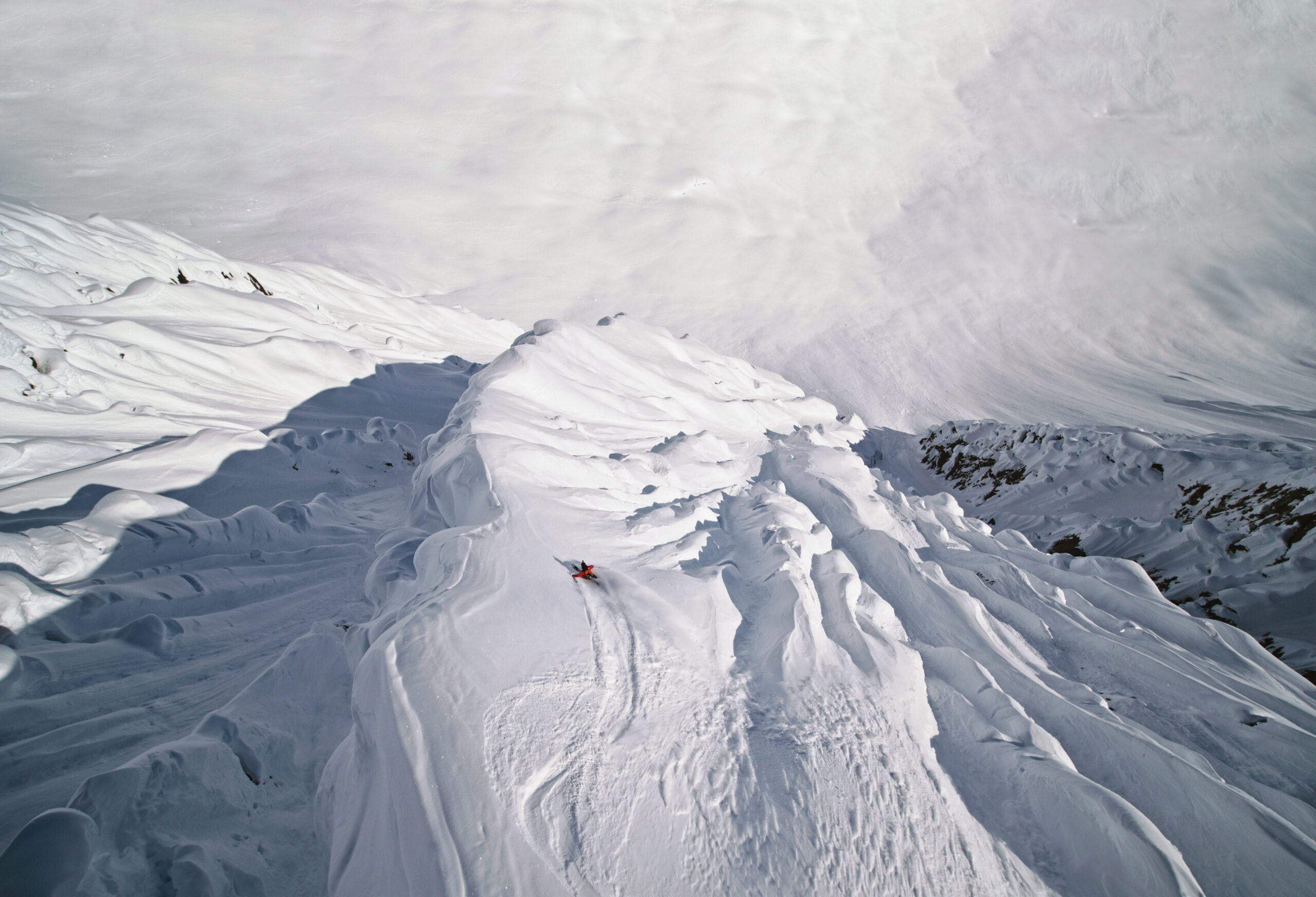Blog: Lessons from the Alaskan Backcountry


By Sam Anthamatten
Photos by Frederik Kalbermatten and Jérôme Tanon
In 2022, I teamed up with extreme snowboarder Victor de Le Rue to make the Alaskan ski movie Free Rider. The experience taught me invaluable lessons about backcountry adventures, and here, I reflect on what I learned.
We had been stuck in Haines for ten days, waiting out bad weather, when another storm appeared on the forecast. This was all part of the game—waiting, watching, and hoping for a break. When the window finally opened, we had one chance to check out our chosen zone before the next storm cycle. The plan was for me to fly out in a small aircraft with enough supplies to last a week so I could do a proper reconnaissance.
As the plane faded into the distance, I realized just how alone I was. I put on my skins and crossed the glacier towards the face, but as I got closer, I knew we had made a mistake. The face was far bigger than I had grasped from maps and photos. Objective hazards loomed everywhere—monstrous cornices, deep crevasses, and countless no-fall zones. The plane was already on its way back to Haines, leaving me alone to make the decision.
The answer was clear—I didn’t feel good about it. In the mountains, trusting your gut isn’t just a cliché, it’s survival. If something doesn’t feel right, there’s usually a reason. Under pressure, gut instinct can be your best tool. I pulled out my satellite phone and called the team:
“It’s a no.”
They weren’t thrilled, but the decision was made, and the plane turned around to pick me up. On the flight back, I spotted our second-choice zone, and it looked solid. The next morning, the storm slammed into the mountains, tearing through the very area we had originally planned to camp in. Another crew nearby lost their tents and gear and had to be rescued.
In the mountains, you can’t force things to be good just because you want them to be—you have to be honest with yourself. The key question I asked on that glacier was simple:
“Is it actually good, or do I just want it to be good?”
That’s the kind of question that keeps you alive.
In the mountains, three key factors determine success: conditions, terrain, and the human element. If two out of three align, you can usually go for it. If all three line up, that’s when you can push your limits.
While shooting Free Rider, one of those factors initially felt off. Filmmaker Jérôme Tanon was there to document the trip, but he didn’t have the technical mountain background that the rest of us had. I saw him as a potential risk. If something went wrong, I assumed it would be with him.
We’d wake up at 4 AM, preparing for the day, and there he was, filming us brushing our teeth. I remember thinking: “Come on, man, focus. It’s go time.” But what I didn’t realize was that he had his own plan. He wasn’t telling us the storyline of his film—he was letting it unfold naturally, capturing every real moment. And that’s exactly why it worked. He even caught the moment I called my wife and she told me she was pregnant. Every time I watch the film, I can’t help but tear up.
Victor knew what Jérôme was capable of, and I didn’t. In the end, Jérôme was the best thing that could have happened for the project. As the trip went on, all three factors started to align. We had perfect conditions, we found ideal terrain, and despite my initial concerns, the team worked seamlessly. Looking back, the skiing I did on that trip was some of the best of my life.
The mountains demand respect and require you to be honest—not just about conditions and terrain, but also about the people you’re with.
When you’re heading into the mountains for weeks, food isn’t just food—it’s fuel. We had plenty of time to plan, but we were so focused on the safety of the riding that food got pushed down the priority list.
Before we left for the glacier, Jérôme and Victor were sent on a grocery run. What they brought back was a disaster: canned meat, canned minced beef chili… basically, dog food.
The right calories make all the difference. Luckily, Yannick, Christopher, and I had brought some cheese and meat for ourselves, which saved me. Food might not seem like the most important part of planning an expedition, but if you don’t have the right fuel, you don’t function.
We take for granted that we can walk into a store and buy whatever we need at any time. But planning food for five people for 21 days in the mountains is a huge challenge. Get it wrong, and you’re in for a nightmare. Get it right, and it can make a good trip an unforgettable one.
Sam Anthamatten
Born: September 1986
Hometown: Zermatt, Switzerland
Lowdown: Professional big mountain skier, Faction and The North Face athlete, mountain guide, and father of two
“When all three elements—conditions, terrain, and the team—come together, you can really go for it.”